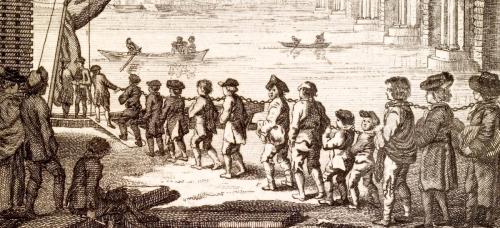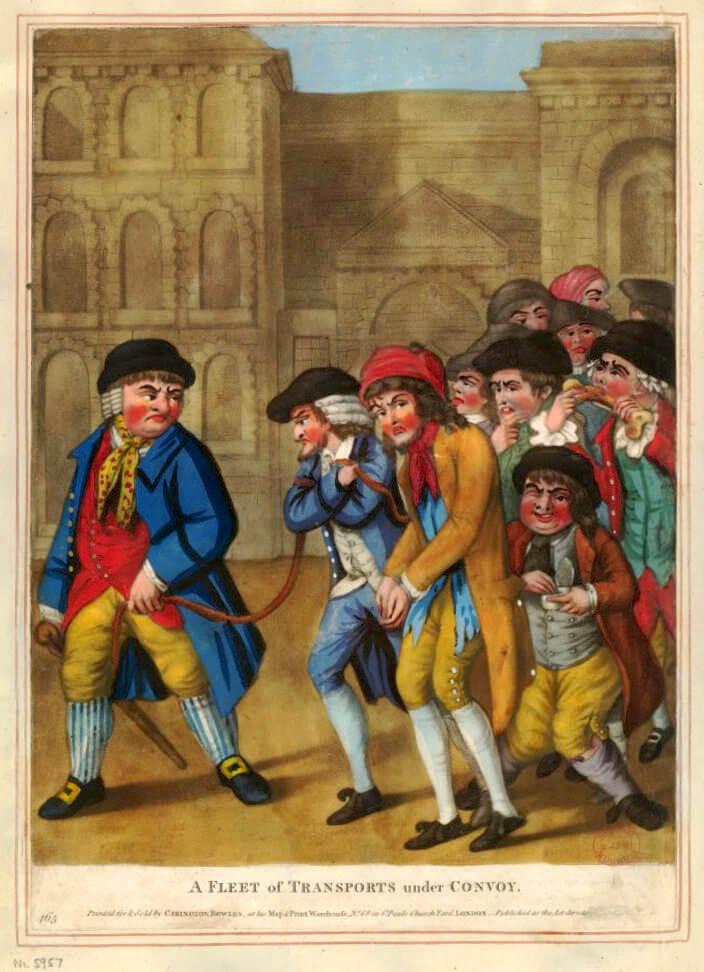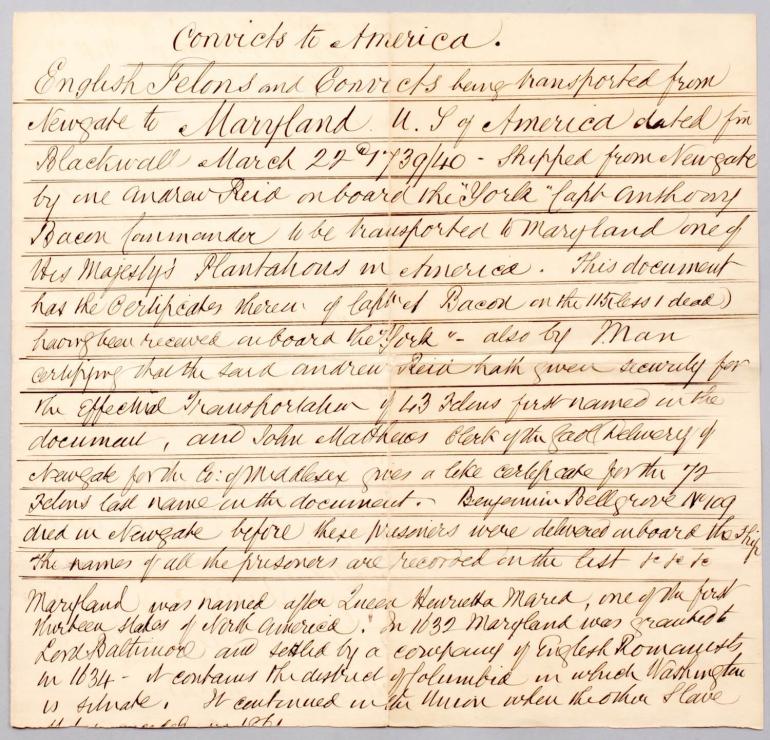Convicts being loaded on to a ship at Black Friars Bridge, London. From the Malefactor's Register, or the Newgate and Tyburn Calendar, by Alexander Hogg, 1779. Courtesy of the British Library.

Transported Convicts
England’s 17th & 18th century justice system was so severe, it was later referred to as the Bloody Code. More than 200 offenses earned the death penalty and most sentences involved bodily harm, like branding or whipping. With the founding of the Atlantic colonies, banishing offenders to distant lands became an alternative punishment. Beginning in the 1610s, England transported convicts, political prisoners, and prisoners of war to their American holdings. No one was exempt -children, women, the elderly, and infirm- all were sentenced to transportation. Not only did it relieve the jails, but also provided cheap labor to the provinces, and offered a vague form of rehabilitation for the offenders.
The colonists bitterly resented this influx of “undesirables” but could not stop it. Many considered the convicts untrustworthy and treated them harshly. Freedom seeker ads demonstrate that many convicts repeatedly tried to escape the miserable lives they faced as cheap laborers.
For the price of 10-20 pounds, ship captains would sell a convict into indentured servitude; seven years for minor offenses like theft and “vagabondry,” 14 years-to-life for capital offenses like murder. The convicts had to be supplied food, shelter, and clothing, but no freedom dues at the end of their term. They also had to pay their own way back to England, so many convicts stayed in the colonies to make a new life. About 25 percent of the transported convicts were women. The Carrolls purchased convict laborers for the Baltimore Iron Works and their other properties, including Mount Clare.
The museum has only classified ads, port, and court records to research these stories.


